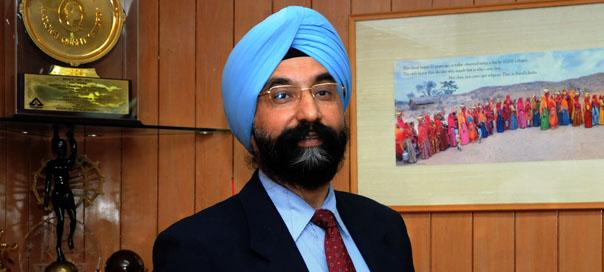Amul has emerged as the No.1 dairy brand in India, having an annual sales turnover of Rs 18,150 crore. Its strategy of growth is driven by expansion, innovation and correct positioning. Of late, the brand has been targeting the younger demographic of the country. What is also noteworthy is how the brand has been reaching out to people in the remotest parts of the country and connecting with them through various media. Ankur Gaurav spoke to R S Sodhi, Managing Director, Gujarat Cooperative Milk Marketing Federation (GCMMF), about Amul’s media strategy and how Print is playing a critical role in its growth story
Q] How do you define Amul’s target audience in the country?
Amul is a brand for the entire family. Our target audience starts from consumers aged five to people in their 70s. We cater to all income groups. A taxi driver in Mumbai is as much a target for Amul as anybody from the upper class of society.
Q] What is your marketing strategy in the Hindi heartland of the country?
The Hindi-speaking belt is a very critical market for us. We try to reach different sets of consumers through Print and Television. The general entertainment channels reach out to millions of households in the country, but there are locations where the national GECs are not very popular. Print media plays a significant role in these areas. The North-east is one part of India where GECs are not very popular due to language constraints and vernacular dailies are the right medium to connect with our target audience.
Q] What is the significance of Print advertising for Amul? Do you think it reaches out to a wide spectrum of people?
Amul is a mass consumption brand. It’s very important for us to reach out to all segments of society. Print is very significant for Amul, and for that matter any FMCG brand catering to the mass market. Amul has different categories of products doing well in different parts of the country, for example Amul Butter and Amul Ghee are very popular in the northern belt, while flavoured milk is popular in the southern market. In this case, we cater to the local tastes through the local versions of national dailies or through the vernacular press. Print will continue to play a major role for all our campaigns.
Q] Any particular Print campaign that you remember which connected well with the masses?
For the past 4-5 years, the Amul Butter girl and her comments have continued to connect with the masses. People actually look forward to see the Amul Girl’s comment on recent developments in the country. ‘Eat milk with every meal’ is the latest campaign from Amul, comprising full page ads in newspapers. The entire effort through Print was focused on strengthening the position of Amul and making the entire range of Amul dairy products trendy and appealing for all.
Q] What is the importance of North India in your media plan?
For Amul, North India and West India are strongholds and the North-east and South are still growing in terms of reach and distribution. Most of our media plans on a national level work well with the already established North Indian population. Whether we reach out through Television commercials on GECs or through Print, it connects well with the North Indian Hindi speaking belt. We usually have to develop a slightly differentiated approach for the South and North eastern part of the country due to language barriers.
Q] Which Print medium works best for you?
Newspapers namely Dainik Jagran, Hindustan, Amar Ujala, Rajasthan Patrika work best for us due to their reach and widespread distribution.

Q] How have you leveraged Print for a product launch or promotion?
The ‘Eat milk with every meal’ campaign was totally focused on Print as a medium as we wanted consumers to pay attention to the variety of products that Amul has to offer. Getting noticed and reaching out to the audience is much easier through Print in this case when placement of each product was the key. Apart from this, Amul ice-cream promotion happens in the summer through Print as this campaign is very seasonal and the time or season is very location dependent.
Q] Why does the brand believe that Print will continue to be a part of its media mix?
Print will continue to remain important not just for Amul but for any advertiser as Television advertising has become cluttered. It is very difficult to reach out to the target audience through Television. There is a possibility that your message may be ignored, go unnoticed or forced onto the consumers whereas the Print space attracts more attention and mind space as the audience consumes news. Our break-up of the media mix is 70-30; 30% goes into Print advertisements whereas less than 70% goes into Television. The rest is shared between the Outdoor and social media space. Social media has suddenly become a mandatory grazing field for advertisers. Even Amul has recently come out with a social media campaign Har Ghar Amul Ghar, which is a viral video meant only for social media websites. Role of Print will continue to be significant for us as Television is becoming more and more cluttered while Print continues to be read by millions.
Q] What is the percentage of sales coming from the Hindi belt with respect to other areas ?
Our sales break-up between the Hindi heartland (including North and West) and non-Hindi speaking areas is 60-40.























